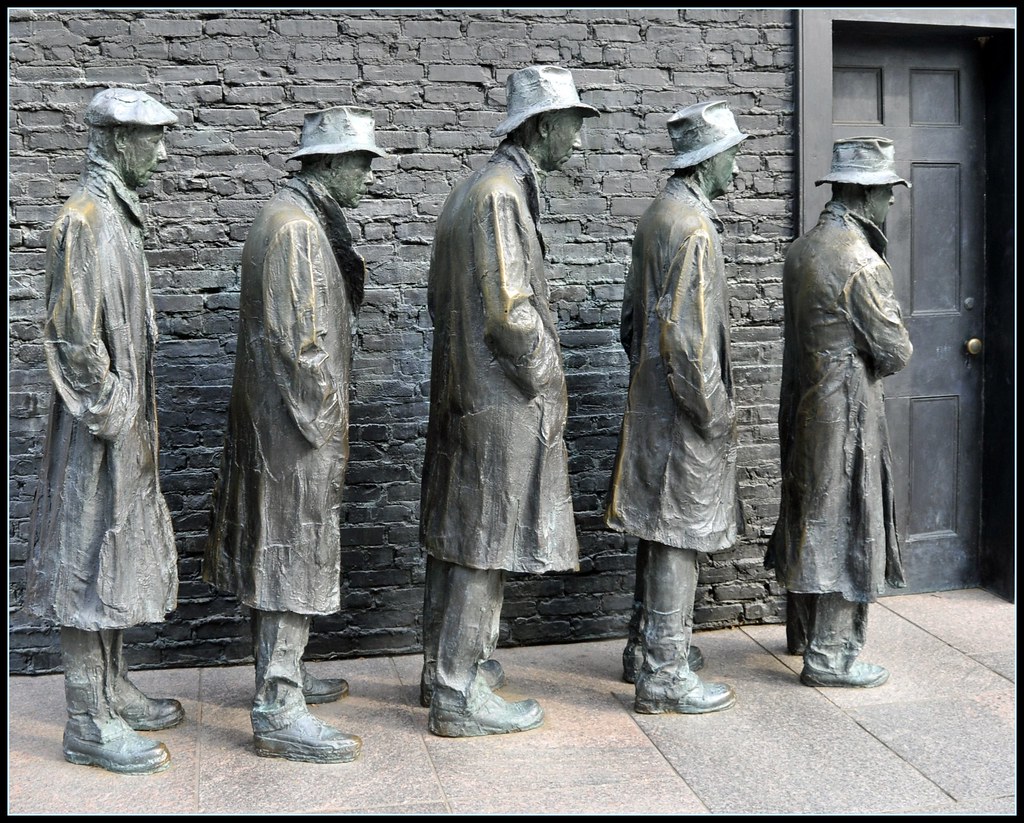Memories are a crucial part of our lives, shaping who we are and how we perceive the world around us. But not all memories are pleasant. Some can be painful, traumatic, and difficult to forget. These memories can haunt us for years, holding us back from living our lives to the fullest. But what if there was a way to forget these painful memories forever? What if we could use self-hypnosis to reprogram our minds and let go of the past? In this blog post, we’ll explore the power of self-hypnosis and how it can help us forget painful memories once and for all. Get ready to unlock the secrets of your mind and start living a happier, more fulfilling life.

Understanding the Power of Self-Hypnosis for Memory Modification
Self-hypnosis is a powerful tool that can be used to modify memories, including those that are painful or traumatic. By accessing the subconscious mind, self-hypnosis allows individuals to reframe their memories and emotions, ultimately leading to a reduction in negative feelings associated with the memory. This technique can be particularly useful for those who have experienced trauma or other difficult life events. Through memory modification, individuals can learn to let go of negative emotions and move forward with their lives. However, it is important to note that self-hypnosis should only be used under the guidance of a trained professional, as it can have unintended consequences if not done correctly. With proper guidance and practice, self-hypnosis can be a powerful tool for healing and personal growth.
Step-by-Step Guide: How to Hypnotize Yourself to Forget a Bad Memory
- Find a quiet and comfortable place where you won’t be disturbed for at least 20 minutes.
- Sit or lie down in a relaxed position and take a few deep breaths to calm your mind and body.
- Close your eyes and visualize yourself in a peaceful setting, such as a beach or forest.
- Repeat a positive affirmation to yourself, such as “I am in control of my thoughts and emotions.”
- Visualize the painful memory as if it is on a movie screen in front of you.
- Imagine the screen getting smaller and smaller until it disappears completely.
- Replace the negative memory with a positive one, such as a happy moment from your life.
- Repeat the positive affirmation again and visualize yourself feeling happy and free from the negative memory.
- Slowly count from 1 to 5, telling yourself that you will feel alert and refreshed when you reach 5.
- Open your eyes and take a few deep breaths before getting up.
Remember that self-hypnosis may not work for everyone, and it’s important to seek professional help if you’re struggling with trauma or mental health issues.

Common Misconceptions About Self-Hypnosis and Memory Alteration
Many people believe that self-hypnosis can help them forget painful memories instantly. However, the reality is quite different. Hypnotizing oneself to forget a bad memory requires dedication, practice, and patience.
Another common misconception is that hypnosis erases memories completely. In reality, it’s more like putting a memory in a filing cabinet in the back of your mind. The memory is still there but doesn’t cause as much emotional pain or distress.
Lastly, some believe that hypnosis can be dangerous or lead to false memories. While it’s important to approach self-hypnosis with care and caution, numerous studies have shown its safety and effectiveness when done correctly by an experienced practitioner or using guided recordings from reputable sources.
It’s essential to keep these misconceptions in mind before attempting self-hypnosis for memory alteration purposes. With proper guidance and understanding of the process, however, many individuals have found success in reducing emotional distress caused by past traumatic events through this technique.

Techniques for Enhanced Concentration During Self-Hypnosis Sessions
During self-hypnosis sessions, it’s important to maintain a high level of concentration in order to achieve the desired results. One technique for enhancing concentration is to use visualization. Before beginning the session, imagine yourself in a peaceful and calming environment. This can help you relax and focus on the task at hand.
Another technique is to use positive affirmations. Repeat a positive statement to yourself, such as “I am in control of my thoughts and emotions” or “I am strong and capable of overcoming this memory”. This can help boost your confidence and keep you focused on the goal of forgetting the painful memory.
It’s also important to eliminate any distractions during the session, such as turning off your phone or finding a quiet space where you won’t be interrupted. By following these techniques for enhanced concentration, you can increase the effectiveness of your self-hypnosis sessions and achieve your desired outcome of forgetting a painful memory.

Navigating Emotional Triggers When Using Self-Hypnosis for Painful Memories
Identifying Emotional Triggers: Understanding the Root Cause of Painful Memories
When using self-hypnosis to forget painful memories, it’s important to identify the emotional triggers that are associated with them. This means recognizing what specific feelings or thoughts bring up the memory and cause discomfort. By doing so, you can begin to understand the root cause of your pain and work on addressing it directly.
One helpful technique is to journal about your emotions before and after a self-hypnosis session. Look for patterns in your writing – do certain words or themes come up repeatedly? Pay attention to any physical sensations as well, such as tightness in your chest or stomach.
Remember, identifying emotional triggers takes time and patience but is crucial in successfully using self-hypnosis as a tool for forgetting traumatic experiences.
Techniques for Managing Emotional Triggers During Self-Hypnosis
During self-hypnosis sessions aimed at forgetting painful memories, it’s important to be prepared for potential emotional triggers. These triggers can bring up intense feelings of sadness, anger, or fear, and may even cause the memory to become more vivid. To manage these triggers, it’s helpful to have a plan in place. One technique is to visualize a “safe space” where you can retreat to if you feel overwhelmed. Another is to practice deep breathing exercises or progressive muscle relaxation to calm your body and mind. Remember that it’s okay to take breaks or end the session early if needed. By being proactive and prepared, you can navigate emotional triggers during self-hypnosis and work towards forgetting painful memories for good.
How to Create a Safe Space for Self-Hypnosis and Memory Reprocessing
Creating a safe space is crucial when using self-hypnosis to forget painful memories. Find a quiet and comfortable place where you won’t be disturbed. Close your eyes and take deep breaths to calm your mind and body. Visualize a peaceful scene that makes you feel safe and relaxed, such as a beach or a forest. Use positive affirmations to reinforce feelings of safety and security, such as “I am in control” or “I am safe.” If any negative emotions arise during the session, acknowledge them without judgment and return to your safe space visualization. Remember to always prioritize your emotional well-being during the process.
The Role of Positive Affirmations in Overcoming Painful Memories Through Self-Hypnosis
Positive affirmations play a crucial role in successfully hypnotizing yourself to forget bad memories. When you encounter emotional triggers during self-hypnosis sessions, it’s important to reinforce positive beliefs and emotions through affirmations such as “I am safe and protected,” or “I release all negative thoughts.” These statements can help counteract the negative thoughts associated with painful memories and replace them with positive feelings of security and well-being. By repeating these affirmations consistently during your self-hypnosis sessions, you can shift the way your brain processes those traumatic events. This technique helps rewire your thinking patterns for improved mental health over time.

Benefits and Limitations of Using Self-Hypnosis as a Tool for Forgetting Trauma
Using self-hypnosis as a tool for forgetting trauma can have many benefits, but it’s important to also be aware of its limitations. The process of forgetting painful memories is complex and may require more than just hypnosis. Self-hypnosis can help in managing the associated emotional triggers and support individuals to move forward from their traumatic experiences by creating new, positive associations with formerly triggering people or events.
However, it’s crucial to understand that self-hypnosis cannot entirely erase a memory. Memories are stored deep within our brain cells and cannot be permanently erased through any technique or therapy. Instead, self-hypnosis helps modify how we react when triggered by past events so we can live healthier lives without being constantly plagued by negative thoughts.
Overall, utilizing self-hypnosis as one part of an overall memory modification plan alongside therapies such as cognitive-behavioral therapy (CBT) or psychotherapy will lead to greater long-term success in coping with painful memories.
In conclusion, self-hypnosis can be a powerful tool for modifying memories and forgetting painful experiences. By following the step-by-step guide and utilizing techniques for enhanced concentration, individuals can navigate emotional triggers and experience the benefits of self-hypnosis. However, it is important to note that self-hypnosis is not a cure-all and may not work for everyone. It is also crucial to seek professional help if the memories are causing significant distress or interfering with daily life. With proper guidance and an open mind, self-hypnosis can be a valuable tool in the journey towards healing and moving forward from past traumas.
Questions & Answers
Who can hypnotize themselves to forget a bad memory?
Anyone can try self-hypnosis techniques for memory suppression.
What is the first step to self-hypnosis for memory suppression?
Find a quiet, comfortable place where you won’t be disturbed.
How can you hypnotize yourself to forget a bad memory?
Try visualization, positive affirmations, or self-hypnosis audios.
What if self-hypnosis doesn’t work for forgetting a bad memory?
Consider talking to a therapist or counselor for additional support.
How long does it take to forget a bad memory using self-hypnosis?
There’s no set time, but consistency and patience are key factors.
What are some common obstacles to successful memory suppression?
Fear of losing control, skepticism of hypnosis, and lack of focus.
